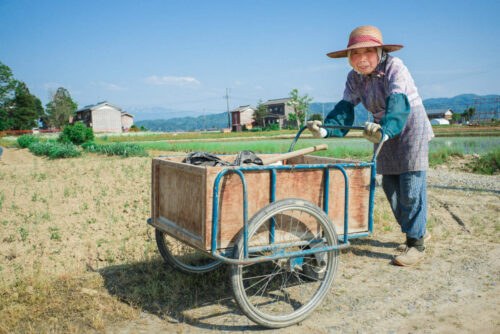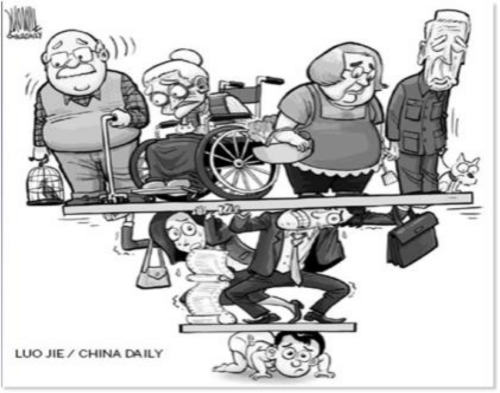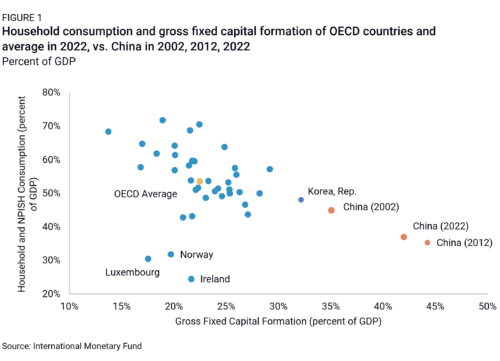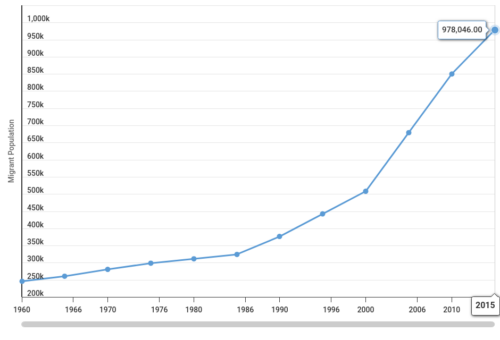

East Asia is facing a severe population crisis. Plummeting birth rates, ageing populations and the rise of singleness are leaving governments stumped. In just a few decades, East Asia has shifted from an image of large, multi-generational households, to societies where marriage and childbirth are often postponed or forgone. An alarming rate of young people in Asia are delaying or forgoing marriage and children altogether. This raises the question: why is this happening? The answer lies in a dramatic shift in cultural values, economic pressures and changing social norms. The golden age of Asia that spawned after the rapid economic growth of major Asian countries has resulted in a change in priorities; from family first to a focus on career ambitions, personal freedom and financial security. While policymakers in Asia have attempted to combat this by introducing incentives to boost birth rates, the reality is that there are hard-coded societal changes that are hard to reverse.

Amid East Asia’s rapid modernisation, fewer young people are choosing to start families. Source: Reuters
The underlying cause of Asia’s great population decline is a multifaceted one. The effects of the rapid modernisation underwent by major Asian powers is a key catalyst to these issues; with the economic change resulting in crowning of individual pursuits such as career and finance, rendering marriage and childbearing secondary considerations.
A pivotal element in this demographic shift is the evolving role of women in Asian society. Traditionally, Confucian beliefs have historically emphasised a woman’s dedication to family life. However, that is not the case today, with many women pursuing career ambitions and personal development over their traditional familial expectations. In South Korea, for instance, women perform more domestic work than others in their household until the age of 84, highlighting significant gender disparities in domestic responsibilities. This imbalance contributes to South Korea’s record-low fertility rate, which stood at 0.72 in 2023—the lowest globally.
The crisis is further exacerbated by the economic landscape of East Asia. Raising a child is not a simple task for couples in Asia. Deep-rooted hyper-competitiveness in a culture where education is the currency of power incentivises parents to invest heavily into private tutoring, extracurricular activities, and elite schooling. Housing affordability poses a challenge even in Asia. In cities like Seoul, Tokyo, and Shanghai, skyrocketing property prices make homeownership, and by insinuation, starting a family increasingly out of reach. For example, the average household net-adjusted disposable income per capita annually in South Korea is USD 24,590, which is much lower than the OECD (Organization for Economic Co-operation and Development) average of USD 30,490, further highlighting the income crisis faced by households.

In East Asia, students are often expected to attend cram schools late into the night. Source: KoreaDaily
Concurrently, the younger generation of Asians have shifted their views towards relationships and marriage. The emergence of terms such as “Sampo generation” or “three-giving up generation” in South Korea; referring to young people abandoning traditional life paths like finding a romantic partner, getting married, and starting a family, reflects a growing disinterest in family life. In China, the legacy of the one-child policy has created an entire generation of only children tasked with the burden of supporting their ageing parents, further outcasting them from their familial values.
The ripple effects of East Asia’s declining population has moved past demographic forecasts, and now entrenched into the very economic, societal and cultural realities of the region. Ostensibly, shrinking population sizes have presented a formidable and immediate economic threat. Countries such as Japan, South Korea, and China are increasingly experiencing a mismatch between the supply and demand of labour — especially as much of the older workforce has made way for millennials and Gen Z.

Is today the peak of East Asia’s population? Source: UN, Department of Economic and Social Affairs 2024
The declining participation of the younger generations in the workforce has hampered productivity growth, as East Asian millennials and Gen Zers have found it increasingly difficult to fill the jobs their parents occupied — the very demographic advantage that a generation before was responsible for the decades of rapid growth now transmogrified into an existential challenge.
For example, Japan has struggled to fill vacancies in a variety of different industries, despite the proliferation of automation and robotic aids. The number of Japanese workers in the construction sector is down 30% from its peak in 1997, and is only projected to worsen, as a startling 12% of existing workers are under the age of 29, whilst 36% are above 55. This shortage in construction workers has led to increased costs and project delays — such as those affecting the Osaka World Expo 2025.
Other industries like agriculture and retail are similarly suffering, 43% of Japanese farm workers are over 75 years old, and a shortage of ~100,000 workers has been projected in the retail industry. Although technological innovation has somewhat tempered the labour shortage, the population crunch nevertheless remains a structural obstacle that threatens to undermine the very economic foundations of several East Asian nations.
This demographic shift has also deepened existing social inequalities, particularly among the ageing population. A burgeoning elderly population threatens to undermine frail social welfare systems. In South Korea, approximately 20% of the population is aged 65+, a figure that is predicted to rise to a staggering 44% by 2050. Indeed, the fact that an alarming one-half of Korea’s population aged 65+ experiences relative poverty — a number four times higher compared to the OECD average paints a grim national self-portrait: one where decades of rapid economic development has not translated into secure ageing for those who spurred the nation’s transition into prosperity. For much of East Asia’s ageing population, survival looks to be a combination of contributions from family, government, or even through returning to menial work — a general trend which only further pressures existing social welfare systems.

Japan’s ageing population has left critical industries, such as agriculture, heavily reliant on elderly workers. Source: Tokyo Times
Traditional East Asian ideals of the multi-generational household are also crumbling at the hands of population erosion. Decades of China’s One Child Policy has fostered a ‘4-2-1’ family structure, where one grandchild is now expected to financially care for both sets of their parents and grandparents, but also potentially their partner’s parents and grandparents — a predicament that is also experienced in fellow low birthrate countries such as Japan and Korea. Such a caregiving burden only further promotes career advancement over marriage and childbearing.

A growing elderly population outweighs the declining working age and youth populations.
Indeed, millennials and Gen-Zers face the triple burden of supporting family elders, a strained welfare system, as well as the increased difficulty of their everyday lives — defined by rocketing house prices, unstable labour market, coupled with intense academic and workplace competition. Unsurprisingly then, the arithmetic of starting a family simply proves to be too complex, and increasingly costly, for the average citizen to solve.
Yet, the aforementioned conclusion of many creates a painful irony: the very conditions that contribute to low fertility are made worse by the consequence of low fertility itself — leaving those behind to walk a generational tightrope, where the rope below becomes thinner with each step.
Ultimately, these challenges have created a ‘trap’ for the developed nations of East Asia, as shrinking population rates cast a long shadow over their economic prospects and productive capacity. Simply put, a smaller population, a smaller consumer population, less consumption, reduction in economic growth. Such effects due to underconsumption have already been seen to take effect in China, Japan and Korea alike. Consumer spending has been plummeting on an alarming level, contributing to the recessionary conditions throughout East Asian nations seen in the last eighteen months.

Despite decades of rapid economic growth, China’s household consumption remains significantly lower than OECD averages.
As noted, the issue roots deeper in East Asian cultures rather than a lack of consumption from households. Due to cultural, societal and economic pressures, birth rates within these nations are significantly down comparative to historic data. While other developed countries, like Australia and New Zealand, have turned to immigration to offset the demographic decline, Asian nations have been traditionally hesitant due to a multitude of factors.
East Asian nations are typically immigration-adverse due to their status as typically mono-ethnic countries that are composed of an overwhelming local majority ethnicity. This consequentially impacts views on national identity and subsequently flows through to a nation’s stance as immigration-adverse. This has not been a recent development, Eastern Asian nations have historically opposed rule from colonial powers, and have prided themselves on being independent, self-reliant nations. Whilst this view is clear within policy decisions on a whole. The same cultural attitude ultimately makes immigration difficult on the migrants themselves, as restrictive and unfavorable attitudes toward foreign workers or immigrants inhibits migrants ability to assimilate within wider society.

There were only 948,046 migrants living in China in 2015. Source: Macrotrends
However nations like Japan and Korea, have recognised that their ways are no longer applicable and given the dire situation of their population crisis, and the potential implications on their nations, have ultimately begun the push for foreign immigrants to call their country home. With both of these nations publicly offering incentives for immigrants to make the move.
Moving forward it appears that Eastern Asian nations are recognising the severity of their population crisis, as they begin to feel the effects of a declining population. With the lack in popularity of young people raising families, and a rapidly aging population. Nations are conceding that they need to make a policy and cultural shift towards immigration in order to preserve their social, cultural and economic longevity.
BNP Paribas. (2024). Japan entering recession. Economic Research. Retrieved from https://economic-research.bnpparibas.com/Media-Library/en-US/Japan-entering-recession-3/5/2024,c40542
D8aspring. (2022). The rise of the single household in East Asia. Retrieved from https://www.d8aspring.com/eye-on-asia/the-rise-of-the-single-household-in-east-asia
The Hankyoreh. (2023). [English] Article. Retrieved from https://english.hani.co.kr/arti/english_edition/e_national/1097910.html
IZA World of Labor. (2020). The labor market in South Korea. Retrieved from https://wol.iza.org/articles/the-labor-market-in-south-korea/
The Lancet Regional Health. (2023). [Article]. Retrieved from https://www.thelancet.com/journals/lanwpc/article/PIIS2666-6065%2823%2900183-9/
National Center for Biotechnology Information. (2018). [PMC Article]. Retrieved from https://pmc.ncbi.nlm.nih.gov/articles/PMC6070151/
OECD. (2014). Reducing the high rate of poverty among the elderly in Korea. Retrieved from https://www.oecd.org/en/publications/reducing-the-high-rate-of-poverty-among-the-elderly-in-korea_5jxx054fv20v-en.html
PressXpress. (2024). Japan turns to AI and robots to tackle rising labour crisis. Retrieved from https://pressxpress.org/2024/04/24/japan-turns-to-ai-and-robots-to-tackle-rising-labour-crisis/
Reuters. (2025). Japan firms face serious labour crunch as ageing population bites, survey shows. Retrieved from https://www.reuters.com/sustainability/sustainable-finance-reporting/japan-firms-face-serious-labour-crunch-aging-population-survey-shows-2025-01-15/
ScienceDirect. (2024). [Journal Article]. Retrieved from https://www.sciencedirect.com/science/article/abs/pii/S0147176724000518
Asian Studies Association. (2008). Marriages and families in East Asia: Something old, something new. Retrieved from https://www.asianstudies.org/publications/eaa/archives/marriages-and-families-in-east-asia-something-old-something-new/
Wood Central. (2024). Dream or reality? Concerns grow as World Expo hit with new delays. Retrieved from https://woodcentral.com.au/dream-or-reality-concerns-grow-as-world-expo-hit-with-new-delays/#:~:text=SHARE,-Share&text=Less%20than%20six%20months%20before,visitors%20a%20unique%20vantage%20point
The CAINZ Digest is published by CAINZ, a student society affiliated with the Faculty of Business at the University of Melbourne. Opinions published are not necessarily those of the publishers, printers or editors. CAINZ and the University of Melbourne do not accept any responsibility for the accuracy of information contained in the publication.